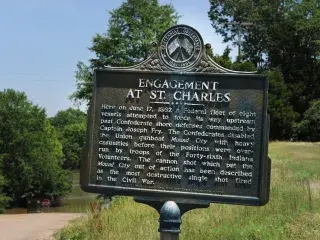Fargo
Though it came into existence as a railroad town, Fargo became known as the site of the Fargo Agricultural School, which operated between 1919 and 1949. The school was established by Floyd Brown, who was educated at Tuskegee Institute and had a dream of educating young rural African Americans who had been excluded from learning by segregation and poverty. After visiting Arkansas in 1915, he returned in 1919 to establish his school just north of Brinkley. The school educated hundreds of students from Fargo and the surrounding Delta area.
Fargo is located on U.S. Highway 49, north of Interstate 40 and midway between Little Rock and West Memphis. It is on the Monroe County Loop of the Great River Road National Scenic Byway. Fargo began in 1898 as a post office stop at the junction of two railroads, the St. Louis Southwestern Railway (Cotton Belt) and the Missouri and North Arkansas (M&NA). A shared depot for the two railroads was established in 1911. According to local history, the town’s name was suggested by a conductor on the Cotton Belt.
Brown sold the Fargo Agricultural School to the State of Arkansas in 1949, and the state changed the school to the Fargo Negro Girls Training School. The school’s buildings were demolished and replaced starting in 1955. Today Fargo has less than 100 residents, but the former school site includes the Floyd Brown-Fargo Agricultural Museum, operating within the headquarters of the Arkansas Land and Farm Development Corporation. Graduates of the school still gather at the museum for reunions.






